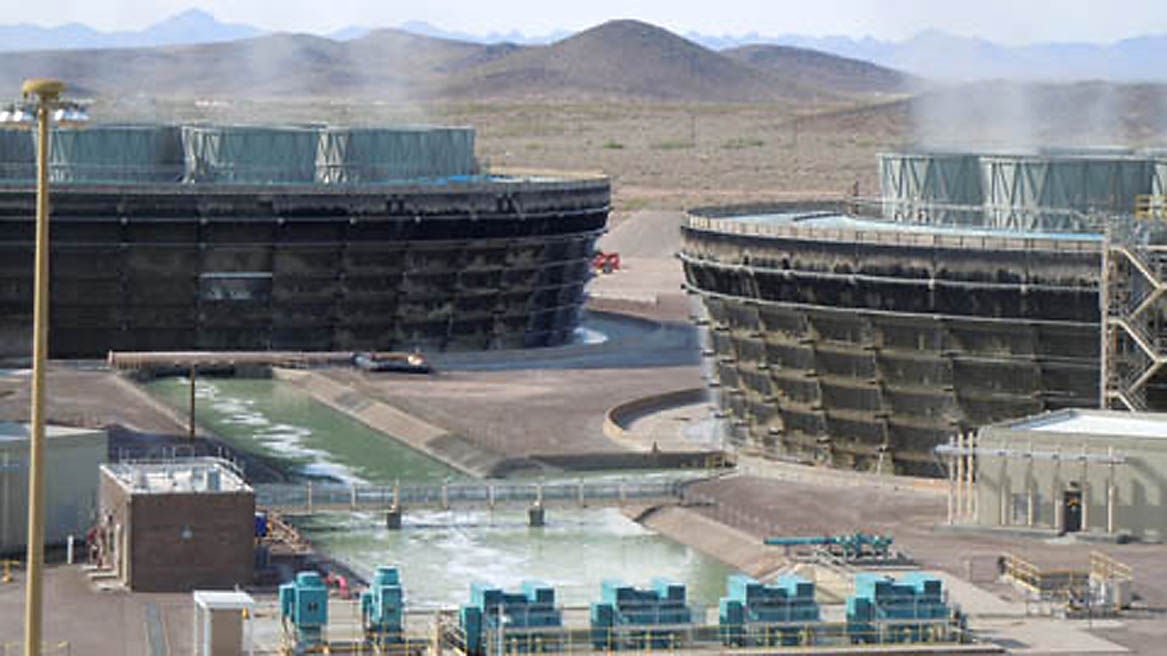PHOENIX — A study financed by Arizona’s largest electric company predicts a loss of jobs and disposable income if voters require utilities to get half their energy from renewable sources by 2030.
There would be up to 501,000 “job years of employment’’ lost by 2060 if the ballot measure becomes law, predicts study author Timothy James, a research professor at the W.P. Carey School of Business at Arizona State University. He also figures on $3.5 billion in lost state taxes and $2.3 billion in lost local taxes.
Those numbers are cumulative totals over a 43-year period. And they presume the accuracy of the study’s assumptions about higher energy costs and fewer utility employees needed to generate power.
James’ study was financed by Arizona Public Service Co., which already is campaigning against the renewable energy mandate.
He said he also bases his numbers on the premise that APS would shutter the Palo Verde Nuclear Generating Station and fire all employees there, even though the initiative would allow half of all electricity to come from non-renewable sources such as nuclear.
Initiative organizers said they need more information about other assumptions used by James before commenting.
But they cited a study by another ASU researcher who said states that enacted renewable-energy requirements between 2005 and 2012 have had “no correlated rate increase.” Wesley Herche, who works at the same Global Institute of Sustainability at ASU as does James, said renewable technologies have become “so cheap recently.”
Herche told Capitol Media Services his own study should not be read as a direct contradiction to James’ conclusions, saying his was based on historical data versus projections made by James based on certain assumptions.
But Herche said his data was subject to “peer review,” while the new report commissioned by APS was not. James’ study also used a non-public “proprietary model” subject to “custom modifications” to reach its conclusions, making it opaque to independent analysis.
James’ findings that there will be higher electricity rates leads to his conclusion that people will have less money to spend on other things that help drive the economy. And, what voters believe will happen could decide whether they support the initiative if it makes the November ballot.
He told Capitol Media Services his conclusions about higher costs make sense on a basic economic level.
“If renewables and distributed generation (rooftop solar) ... were such a silver bullet which would kill the environment problem and simultaneously create thousands if not hundreds of thousands of jobs, why isn’t everybody just doing it?” he asked.
“And the answer to that question is, it’s just more expensive.”
Put another way, he said, “the free market would not be doing this.”
James said the state and its voters have to decide if the environmental trade-offs are worth what he predicts will be additional costs, both to individual consumers and the Arizona economy as a whole.
“Personally, I’m fine with paying more for power if we’re not polluting,” he said. But James said the key is for people to “know what they’re voting for.”
“There would be, for six or seven years, a big investment program in renewables if we went ahead with it,” he said. “That would generate a lot of new jobs, different jobs.”
But once the new systems are built and in place, it doesn’t take a lot of people to run those wind and solar power plants, he said.
“They just operate on their own pretty much,” James said. “So within the industry itself, it’s swapping slightly more job-intensive technology for less job-intensive technology.”
He said the cost of all that investment has to be built in to the cost of the energy, even if the electrons themselves are relatively cheap.
Also, James said no one ever goes entirely “off the grid.” So even if everyone invested in rooftop solar and generated their own power, their peak demand would not match with the peak generating periods. And if there’s a week of cloudy weather, solar customers will want the utilities to provide their electricity.
That, in turn, means the companies need to keep operating the power plants if for no other reason than as a backup, he said.
However, if battery technology improves, James said the ability to store excess power generated on sunny and windy days would mitigate the need to have those other power plants operating and available.





